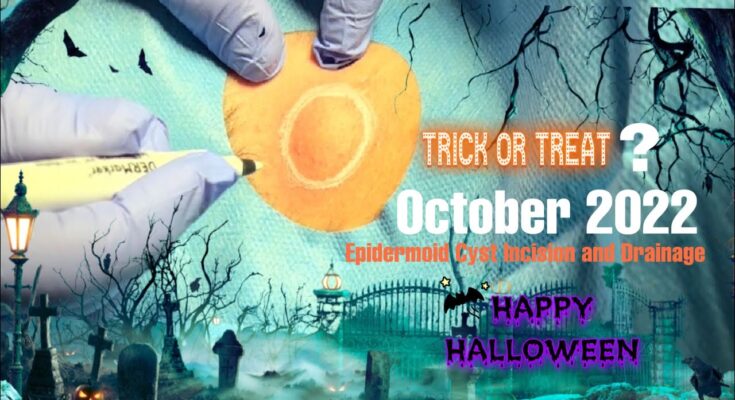The incision and drainage (I&D) of an epidermoid cyst is a relatively straightforward procedure used to treat cysts that are infected, inflamed, or causing discomfort. Here’s a more detailed breakdown of the procedure:
What is an Epidermoid Cyst?
An epidermoid cyst is a benign, often slow-growing cyst that forms when the skin’s cells become trapped beneath the surface. They are typically filled with keratin, a protein found in skin, hair, and nails. These cysts can develop anywhere on the body, but they are most commonly found on the face, neck, or back.
Indications for Incision and Drainage:
- Infected epidermoid cyst (with redness, warmth, and pus).
- Painful cysts that are enlarging or causing discomfort.
- Spontaneous rupture or drainage from the cyst.
- A cyst influencing cosmetic appearance or aesthetics.
Procedure Overview:
- Preparation:
- Patient consent: The patient will be informed of the procedure, possible risks, and expected outcomes.
- Sterilization: The skin around the cyst is thoroughly cleaned with an antiseptic solution (like iodine or chlorhexidine) to minimize the risk of infection.
- Local anesthesia: A local anesthetic (such as lidocaine) is injected around the cyst to numb the area and reduce pain during the procedure.
- Incision:
- After the area is numbed, the healthcare provider makes a small incision (about 1-2 cm) directly over the cyst.
- If the cyst is infected, a larger incision may be needed to allow proper drainage.
- Drainage:
- The cyst is gently compressed, and its contents (keratin or pus) are allowed to drain out.
- If the cyst is inflamed or infected, there may be pus present, which will be carefully removed.
- Squeeze or aspiration: Sometimes, the cyst contents are aspirated using a needle or drained by applying gentle pressure.
- Removal of the Cyst Lining (Optional, but recommended to prevent recurrence):
- Ideally, the cyst’s lining (the sac-like structure) is removed to minimize the risk of recurrence.
- This is often done with forceps, and if it’s not entirely removed, the cyst can refill over time.
- If the cyst lining is difficult to remove, or if it is a small procedure, sometimes leaving it in place is considered acceptable, but the patient may be informed about the higher chance of the cyst returning.
- Wound Care:
- Cleaning: After drainage, the cavity is cleaned, and any remaining fluid or debris is removed.
- Dressing: A sterile dressing is applied over the incision site. Often, the wound will be left open to drain, and a follow-up visit may be necessary to monitor the healing process.
- If needed, a drain may be placed temporarily to allow continued drainage, especially if the cyst was large or infected.
- Post-procedure Care:
- Antibiotics: If the cyst was infected, a course of oral antibiotics may be prescribed to prevent further infection.
- Wound care instructions: The patient is advised on how to care for the wound, such as keeping it clean, dry, and monitoring for signs of infection (increased redness, swelling, or discharge).
- Pain management: Over-the-counter pain medications like acetaminophen or ibuprofen may be recommended to manage any discomfort post-procedure.
- Follow-up:
- The patient will typically be asked to return in 1-2 weeks to check the healing progress and to ensure the cyst doesn’t recur. If the cyst lining wasn’t removed, there is a risk of recurrence, and the cyst may need to be excised surgically at a later time.
- If a drain was placed, it will usually be removed within a few days after the procedure.
Risks and Complications:
- Infection: Although the procedure is done under sterile conditions, there is a slight risk of infection.
- Recurrence: If the cyst lining is not removed during I&D, the cyst can refill and recur.
- Scarring: As with any procedure involving an incision, scarring may occur, especially if the cyst was large or if infection was present.
- Bleeding: Minor bleeding may occur, but it’s usually minimal.
Aftercare:
- Avoid squeezing or applying pressure to the cyst after the procedure.
- Monitor for signs of infection: redness, swelling, or increased pain may indicate that the wound is not healing properly and that infection has set in.
- Avoid sun exposure to the healing wound to reduce scarring.
In most cases, an I&D of an epidermoid cyst is a successful and simple solution to relieve symptoms and prevent further issues. However, if the cyst is recurrent or troublesome, additional treatment (like complete excision of the cyst) may be recommended.



